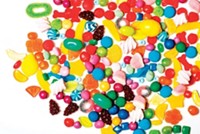Advertisement
Grab your lab coat. Let's get started
Welcome!
Welcome!
Create an account below to get 6 C&EN articles per month, receive newsletters and more - all free.
It seems this is your first time logging in online. Please enter the following information to continue.
As an ACS member you automatically get access to this site. All we need is few more details to create your reading experience.
Not you? Sign in with a different account.
Not you? Sign in with a different account.
ERROR 1
ERROR 1
ERROR 2
ERROR 2
ERROR 2
ERROR 2
ERROR 2
Password and Confirm password must match.
If you have an ACS member number, please enter it here so we can link this account to your membership. (optional)
ERROR 2
ACS values your privacy. By submitting your information, you are gaining access to C&EN and subscribing to our weekly newsletter. We use the information you provide to make your reading experience better, and we will never sell your data to third party members.
Environment
Food Wrapper Chemicals Banned
Health: FDA prohibits three perfluorinated substances in packaging
by Britt E. Erickson
January 7, 2016
| A version of this story appeared in
Volume 94, Issue 2

Three perfluoroalkyl ethyl-containing substances that repel grease and water can no longer be used to coat paper that comes into contact with food sold in the U.S., the Food & Drug Administration announced on Jan. 4. FDA’s action comes in response to a 2014 petition by environmental and public health groups that claim the chemicals are linked to cancer and birth defects.
The substances have been used in microwave popcorn bags, pizza boxes, fast-food wrappers, and other paper food packaging. The chemicals have not been made in the U.S. since 2011. But food packaging that contains the compounds could be made in other countries and imported into the U.S., FDA says.
The three chemicals of concern are:
• Diethanolamine salts of mono- and bis (1H, 1H, 2H, 2H perfluoroalkyl) phosphates where the alkyl group is even-numbered in the range C8-C18 and the salts have a fluorine content of 52.4% to 54.4% as determined on a solids basis;
• Pentanoic acid, 4,4-bis [(γ-ω-perfluoro-C8-20-alkyl)thio] derivatives, compounds with diethanolamine; and
• Perfluoroalkyl substituted phosphate ester acids, ammonium salts formed by the reaction of 2,2-bis[(γ, ω-perfluoro C4-20 alkylthio) methyl]-1,3-propanediol, polyphosphoric acid and ammonium hydroxide.
The basis for FDA’s action is new toxicity data for substances that are structurally similar to these compounds. “There is no longer a reasonable certainty of no harm from the food-contact use of these food-contact substances,” the agency says.
The groups that petitioned FDA welcome the ban but say it is just a small step toward improving U.S. food safety. FDA’s action does nothing to stop food packaging companies from using nearly 100 related chemicals that may also be hazardous, says the Environmental Working Group (EWG), one of the petitioners.
“We know very little about the safety of these next-generation perfluorinated compounds in food wrappers,” says David Andrews, senior scientist at EWG. “But their chemical structure is very similar to the ones that have been phased out,” he says. “Limited safety testing that has been done suggests they may have some of the same health hazards.”
The Natural Resources Defense Council, which also signed the 2014 petition, is urging FDA to quickly act on another petition filed last year that asks the agency to ban seven flavorings used in food, claiming they too cause cancer.





Join the conversation
Contact the reporter
Submit a Letter to the Editor for publication
Engage with us on Twitter